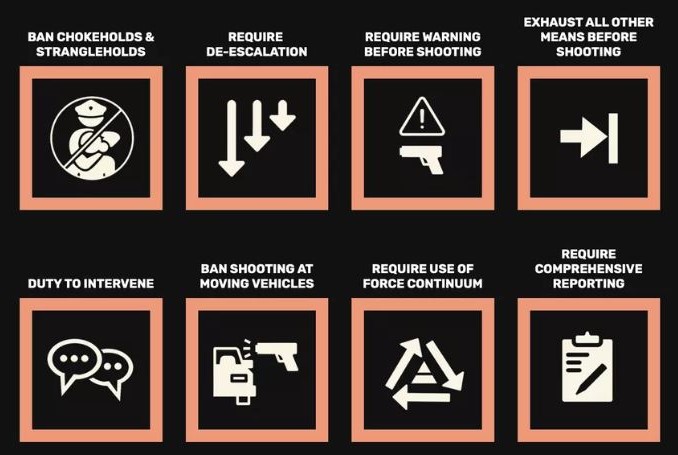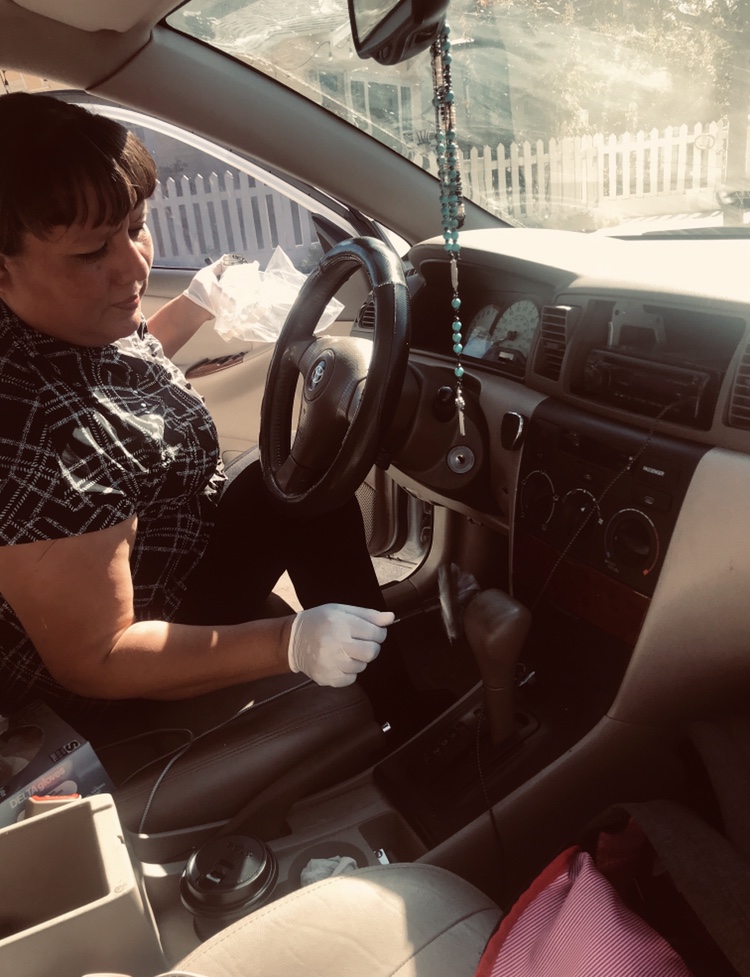A small community of approximately 25,000 residents, Coronado is a unique place to police due to the town’s military presence, many part-time homeowners, tourists and visitors, and proximity to the San Diego-Coronado Bridge, Mexican border, Pacific Ocean, and San Diego Bay. Police Chief Chuck Kaye shares that a goal of the Coronado Police Department (CPD) is to be a professional and compassionate law enforcement agency, integrated into the community, emphasizing the values of trustworthiness and service. To achieve this goal the CPD focuses on three areas: hiring and selection; training and resources; and discipline and accountability.
 With protests for racial equality resonating across the world, an emphasis has been placed on police reform, including 8 Can’t Wait trending on social media with its claims to reduce police killings. There are many factors to consider before assuming that that is a simple answer. But police reform can take center stage to evaluate and make adjustments to the system.
With protests for racial equality resonating across the world, an emphasis has been placed on police reform, including 8 Can’t Wait trending on social media with its claims to reduce police killings. There are many factors to consider before assuming that that is a simple answer. But police reform can take center stage to evaluate and make adjustments to the system.
8 Can’t Wait
Chief Kaye was asked how the police can help change the narrative and find solutions. “We have looked at 8 Can’t Wait and have a document that reflects our current policies in relation to Campaign Zero’s 8 Can’t Wait requirements. Current California law, Campaign Zero’s requirements, and our department policy share the same foundation of respecting and valuing human life. The focus of any critical event is to utilize de-escalation and tactics that bring about a peaceful resolution.”
CPD has changed its use of force standards since January. For additional preparation and resources, officers and dispatchers are required to attend formal de-escalation training, for which a Coronado sergeant helped draft the curriculum. The department maintains two volunteer chaplains and offers mental health services to officers and dispatchers. New models of training emphasize the concepts of time, distance, and resources when dealing with the public. Two Psychiatric Emergency Response Team (PERT) clinicians are assigned to work in Coronado four days a week, to assess mentally ill individuals who police may encounter.

“We adopted the legislative changes found in AB 392 and AB 230 regarding changes to the use of force and de-escalation. Policies were amended and training was conducted for every member of the department, including volunteers. We wanted everyone to understand the changes, why they are important and how we all play a part in reducing the need to use force. In most cases it starts with the way a call is taken by dispatchers, what information is gathered and shared with the responding officers, the pre-planning and identification of the right resources for the response.”
He said use of force and de-escalation topics will continue to be discussed and applied in a practical setting with on-going in-house training, as well as in training officers receive outside the department. Each incident involving force is evaluated and de-briefs are conducted to identify needed improvements.

Ban Chokeholds and Strangleholds – Department Policy 300.4.4
The carotid restraint is not an authorized use of force.Require De-escalation – Department Policy 300.3
The Department recognizes and respects the value of all human life and dignity without prejudice to anyone. Vesting officers with the authority to use objectively reasonable force and to protect the public welfare requires monitoring, evaluation, and a careful balancing of all interests.When time, circumstances and safety permit, officers will take steps to gain compliance and deescalate conflict without using physical force. Examples include:
A. The use of verbal advisements, warnings, persuasion, and calming communication.
B. Attempts to slow down or stabilize the situation so that more time, options, and resources are available.
C. Officers should consider whether a subject’s lack of compliance is a deliberate attempt to resist or is caused by an inability to comply because of disabilities, mental health, narcotics, or alcohol.Require Warning Before Shooting – Department Policy 300.6 (c)
An officer shall provide warnings to the person(s) posing a threat of death or serious bodily injury prior to the application of deadly force unless the immediacy of the threat would risk death or serious bodily injury to the officer or others.Exhaust all other Means Before Shooting – Department Policy 300.6
Officers shall not use deadly force against a person based on the danger that person poses to him/ herself, if an objectively reasonable officer would believe the person does not pose an imminent threat of death or serious bodily injury to the officer or to another person.An “imminent” threat of death or serious bodily injury exists when, based on the totality of the circumstances, a reasonable officer in the same situation would believe that a person has the present ability, opportunity, and apparent intent to immediately cause death or serious bodily injury to the officer or another person. An officer’s subjective fear of future harm alone is insufficient as an imminent threat. An imminent threat is one that from appearances is reasonably believed to require instant attention.
Duty to Intervene – Department Policy 300.3.1
Any officer present and observing another officer using force that is clearly beyond that which is objectively reasonable under the circumstances shall, when in a position to do so, intercede to prevent the use of unreasonable force. An officer who observes another employee use force that exceeds the degree of force permitted by law should promptly report these observations to a supervisor.Ban Shooting at Moving Vehicles – Department Policy 300.6.1
An officer should only discharge a firearm at a moving vehicle or its occupants when the officer reasonably believes there are no other reasonable means available to avert the threat of the vehicle, or if deadly force other than the vehicle is directed at the officer or others.Require Use of Force Continuum – Department Policy 300.4
Officers shall use only that amount of force that reasonably appears necessary given the facts and totality of the circumstances known to or perceived by the officer at the time of the event to accomplish a legitimate law enforcement purpose.The reasonableness of force will be judged from the perspective of a reasonable officer in the same situation based on a totality of the circumstances and without the benefit of hindsight. on the scene at the time of the incident. Any evaluation of reasonableness must allow for the fact that officers are often forced to make split-second decisions about the amount of force that reasonably appears necessary in a particular situation, with limited information and in circumstances that are tense, uncertain, and rapidly evolving.
Require Comprehensive Reporting – Department Policy 300.7
Any use of force by a member of this department shall be documented promptly, completely, and accurately in an appropriate report.
Body-Worn Cameras
CPD was the first department in San Diego County to start the Body-Worn Cameras (BWC) pilot program in August 2012. CPD officers wear body cameras to keep them safe and aware, and to improve community relations. The public can review BWC footage after a records request for the following reasons:
- BWC is released per the CVC for all parties involved in traffic accidents.
- BWC is released at the DA’s office through discovery on all crime cases.
- BWC is released to citizens representing themselves for traffic cases.
- BWC is released when CPD receives a subpoena related to a criminal court action.
- BWC is released internally to requesting Supervisor when requested for use of force incidents.
* The city attorney is consulted before denying a request.
Use of Force
The national spotlight is on use of force, especially as it relates to minorities. Use of force involves a variety of actions including grabbing arms, pointing or firing a taser gun, hitting with a baton, pointing or using a gun, using a head wrap to contain fighting, utilizing a spit sock, using a bean bag gun, which comes in two sizes, pepper spray and a variety of other options.
At the CPD, every incident gets evaluated to see if the response was appropriate. Chief Kaye points out that police officers are not trained to kill, but rather to stop the threat, and the public can ask to review use of force videos. “If you feel you have been mistreated, we encourage you to call and we will work with you,” he emphasizes.
Another component of ensuring a professional and compassionate department involves disciplining, counseling, and holding officers accountable. In 2019, the department reviewed seven formal complaints, one was sustained, two were not sustained, three were unfounded, and one was withdrawn.
In 2019, CPD had nearly 18,000 calls for service into the Communication Center. The officers, as part of the proactive procedures, had another 28,000 interactions from traffic stops to incidents while walking the streets, for a total of 46,000 interactions. There were 16 Use of Force cases in 2019, below is the breakdown by category:
| Grab, Push, Pull | 6 |
| Cord Cuff Restraint Device | 2 |
| Firearm Pointed at Subject | 2 |
| Control Hold | 4 |
| Pressure Point | 1 |
| Spit Sock | 1 |
| Strike | 2 |
| Takedown | 7 |
| Taser (Probes) | 1 |
| Taser (Laser only) | 2 |
Keeping the community safe has many facets for the CPD as shown by these 2019 statistics:
| Calls for service | 17,951 |
| Self-initiated calls | 28,395 |
| Total radio calls | 46,346 |
| Traffic stops | 9,863 |
| Adult Felony arrests | 9 |
| Adult Misdemeanors | 56 |
| Juvenile Felony arrests | 0 |
| Juvenile Misdemeanors | 1 |
 With a total of nearly 10,000 traffic stops, tickets were primarily issued for speeding, violation of signs, and unsafe driving.
With a total of nearly 10,000 traffic stops, tickets were primarily issued for speeding, violation of signs, and unsafe driving.
Shootings are not a common occurrence in Coronado. Prior to the shooting this past May 4 on Orange Avenue, the last shooting was January 1, 2012, which was a triple homicide suicide on Park Place.
CPD is currently in the process of updating its 20-year old Computer Aided Dispatch (CAD) system. And with the adoption of its Report Management System (RMS), the department will become more efficient in documenting crimes, arrests, evidence, and have the ability to provide more detailed data regarding activities in relation to traffic, crime, arrests, foot patrols, etc. Officers will be able to utilize more of the CAD and RMS in the field, for more efficiency and better service.

Next in the series: CPD and the San Diego-Coronado Bridge.




